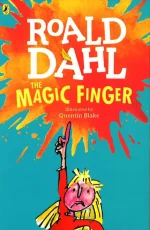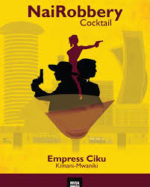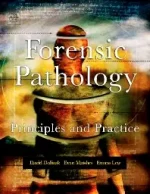-
Sexuality and Gender Politics in Mozambique
KSh 1,499.00Winner of the 2012 gender research award KRAKA-prisen.
This book is about gender politics in Mozambique over three decades from 1975 to 2005. The book is also about different ways of understanding gender and sexuality. Gender policies from Portuguese colonialism, through Frelimo socialism to later neo-liberal economic regimes share certain basic assumptions about men, women and gender relations. But to what extent do such assumptions fit the ways in which rural Mozambican men and women see themselves? A major line of argument in the book is that gender relations should be investigated, not assumed, and that policies not matching people’s lives are not likely to succeed.
The empirical data, on which the argument is based, are first a unique body of data material collected 1982-1984 by the national women’s organization, the OMM [when the author was employed as a sociologist in the organization] andsecondly data resulting from more recent fieldwork in northern Mozambique.
Importantly inspired by African post-colonial feminist lines of thinking, the book engages in a project of re-mapping and re-interpreting ‘culture andtradition’. In this context, the book investigates in particular matriliny [c. 40 per cent of Mozambique’s population live under conditions of matriliny] and female initiation. The findings open new avenues for gender politics, and for rethinking sexuality and gender – in Africa and beyond.Signe Arnfred is Associate Professor, Dept of Society & Globalization, and Centre for Gender, Power & Diversity, Roskilde University
-
Fall of Giants
KSh 400.00The first in Ken Follett’s bestselling Century Trilogy, Fall of Giants is a captivating novel that follows five families through the world-shaking dramas of the First World War, the Russian Revolution, and the struggle for votes for women.
A world in chaos.
1911, a thirteen-year-old boy, Billy Williams, begins working down the mines as George V is crowned king. The escalating arms race between the empire nations will put not only the king but this young boy in grave danger.A terrible war.
Billy’s family is inextricably linked with the Fitzherberts, the aristocratic owners of the coal mine where he works. And when Maud Fitzherbert falls in love with Walter von Ulrich, a spy at the German embassy in London, their destiny also becomes entangled with that of Gus Dewar, an ambitious young aide to Woodrow Wilson, and two orphaned Russian brothers, the Peshkovs, whose plan to emigrate to America falls foul of conscription, revolution and imminent war.A revolution that will change everything.
When Russia convulses in bloody revolution and the Great War unfolds, the five families’ futures are entwined forever, love bringing them closer even as conflict takes them further apart. What seeds will be sown for further tragedy in the twentieth century and what role will each play in what is to come?KSh 995.00 -
Escalator Escapade-girlz rock
KSh 295.00Escalator Escapade – Girlz Rock follows the girls on a wild mall adventure filled with laughs, surprises, and friendship in this fast-paced, fun story.
Sophie and Jess are trying on jewellery at the local shops. But the girls get �stuck� when they lose a ring on the escalator, and learn the hard way that what goes up must come down�
-
Fun Farmyard Learning – First Numbers
KSh 495.00The Fun Farmyard Learning series introduces your child to challenging new concepts and skills.
-
Roald Dahl: The Magic Finger
KSh 995.00Read Roald Dahl’s The Magic Finger, a witty children’s story about a girl with a powerful finger that teaches her neighbors a surprising lesson about kindness, empathy, and respect for nature.
From the bestselling author of Charlie and the Chocolate Factory and The BFG comes the story of a young girl with an incredible power! To the Gregg family, hunting is just plain fun. To the girl who lives next door, it’s just plain horrible. She tries to be polite. She tries to talk them out of it, but the Greggs only laugh at her. Then one day the Greggs go too far, and the little girl turns her Magic Finger on them. When she’s very, very angry, the little girl’s Magic Finger takes over. She really can’t control it, and now it’s turned the Greggs into birds! Before they know it, the Greggs are living in a nest, and that’s just the beginning of their problems….
-
Peppa Pig: Rebecca Rabbit
KSh 495.00Peppa loves playing with her friend Rebecca Rabbit. They like going swimming together.
-
Churchill-by Ashley Jackson
KSh 700.00In a much-acclaimed account, Jackson describes the contours and contradictions of a remarkable life and a career he describes as ‘Winston Churchill’s appointment with destiny’.
-
NaiRobbery Cocktail-Empress Ciku
KSh 1,500.00Nairobbery Cocktail by Empress Ciku (Kimani -Mwaniki)
Born and raised on the outskirts of Nairobi, Kanja experiences a horror that shatters his innocence as a young boy, leaving scars that define his adult life in the raw reality of scavenging on Nairobi city streets. Kanja quickly learns Nairobi’s rules of survival; hardened and fierce, he earns respect and fear, becoming a “Boss” of Nairobi’s underworld.
Empress Ciku Kimani-Mwaniki connects criminals with compromised police, prostitutes, and the urban poor. NaiRobbery tells a story of rivalry between city gangs, ruthless murders, steamy sex-and empathy for Nairobis downtrodden even by kingpins of crime.
-
Brunner & Suddarth’s Textbook of Medical-Surgical Nursing -15th ed(international edition)
KSh 17,000.00Brunner & Suddarth’s Textbook of Medical-Surgical Nursing (Single Volume), 15th Edition
Keeping tomorrow’s nurses at the forefront of today’s changing healthcare environment, Brunner & Suddarth’s Textbook of Medical-Surgical Nursing, 15th Edition delivers the most comprehensive resource available for nursing students in the medical-surgical course. This bestselling text is designed for the way students like to learn, combining a highly readable approach with engaging case studies and learning tools to help students explore essential patient care practices in real-world terms and gain a more practical understanding of how they’ll apply what they’ve learned in practice.Trusted by instructors, students, and practicing nurses for nearly 60 years, this landmark resource has been comprehensively updated for the 15th Edition to reflect the latest research, evidence-based practices, settings, issues, ethical challenges, and concerns of today’s healthcare practice. Complete integration with Lippincott® CoursePoint+ allows you to easily map out your entire course, provide personalized student remediation, and simulate real-world nursing scenarios involving patients mentioned in vignettes in the text, giving your students unparalleled preparation for success in the medical-surgical nursing workforce.
-
Forensic Pathology Principles and Practice
KSh 60,000.00Forensic Pathology is a comprehensive reference that uses a case-oriented format to address, explain and guide the reader through the varied topics encountered by forensic pathologists. Developed in response to a severe void in the literature, the book addresses topics ranging from medicolegal investigation of death to death scene investigation, forensic autopsy, and artifacts of resuscitation as well as complications of medical therapy, forensic osteology, forensic odontology, forensic photography, and death certification. The book includes various types of cases, including sudden natural death, asphyxia, motor vehicle collisions, death in custody, child abuse and elder abuse, acute psychiatric and emotional deaths, and pregnancy. It contains sample descriptions of pathological lesions which serve to aid pathologists in reporting their findings to law enforcement agencies, attorneys, and others involved in investigations of sudden death. The concepts outlined in the text are beautifully illustrated by large, colorful photographs. There are also “Do and Don’t” sections at the end of each chapter that provide guidance for handling the types of cases examined. This work will benefit not only experienced forensic pathologists, but also hospital pathologists who occasionally performs medicolegal autopsies; doctors in training; medical examiners; law enforcement personnel; crime scene investigators; attorneys; and fellows and students of the medical sciences.










